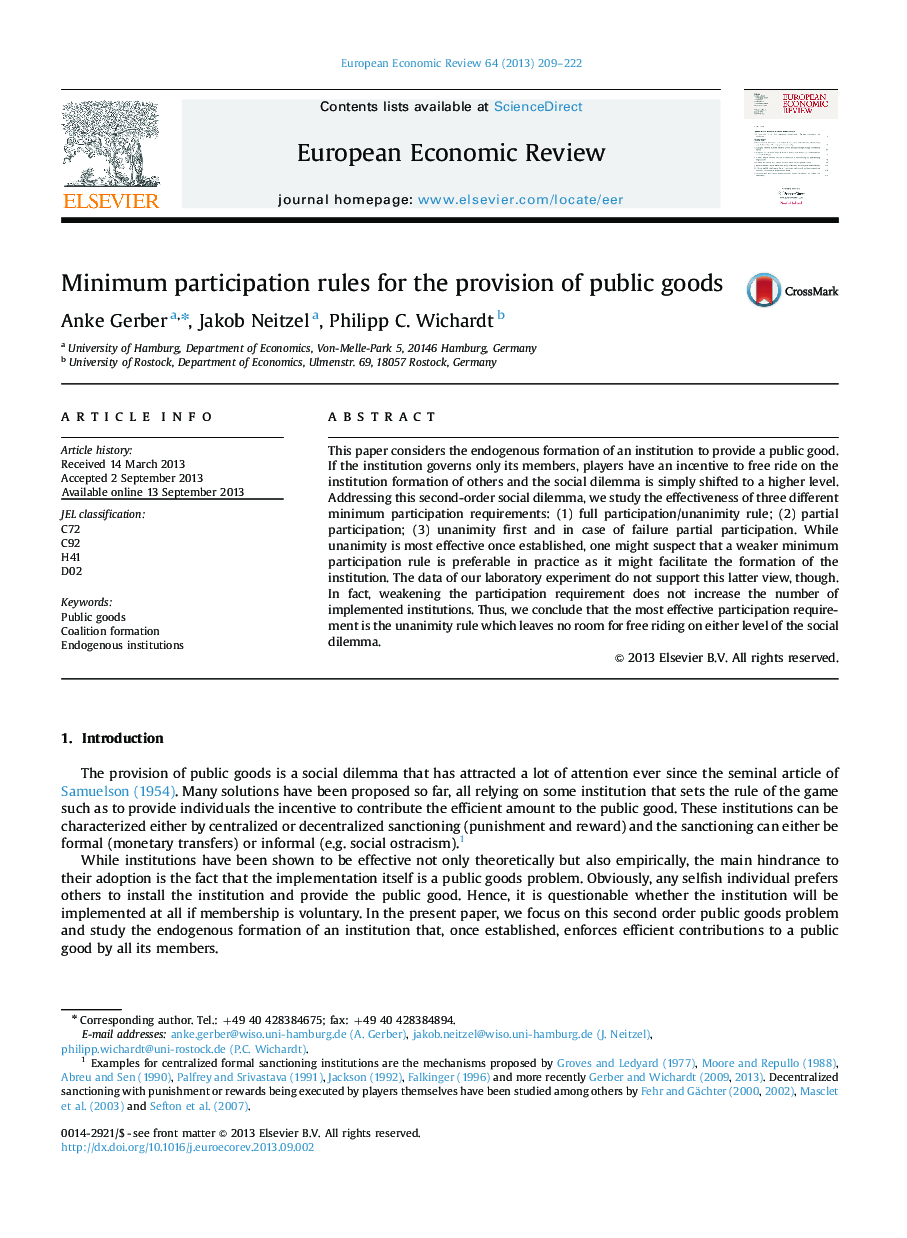| Article ID | Journal | Published Year | Pages | File Type |
|---|---|---|---|---|
| 5066925 | European Economic Review | 2013 | 14 Pages |
â¢We compare three different minimum participation rules in theory and in an experiment.â¢The experimental results show that stricter rules lead to higher overall efficiency.â¢The number of implemented institutions is the same in all treatments; institution sizes are not.â¢There is no evidence for a substantial number of inequality averse subjects.
This paper considers the endogenous formation of an institution to provide a public good. If the institution governs only its members, players have an incentive to free ride on the institution formation of others and the social dilemma is simply shifted to a higher level. Addressing this second-order social dilemma, we study the effectiveness of three different minimum participation requirements: (1) full participation/unanimity rule; (2) partial participation; (3) unanimity first and in case of failure partial participation. While unanimity is most effective once established, one might suspect that a weaker minimum participation rule is preferable in practice as it might facilitate the formation of the institution. The data of our laboratory experiment do not support this latter view, though. In fact, weakening the participation requirement does not increase the number of implemented institutions. Thus, we conclude that the most effective participation requirement is the unanimity rule which leaves no room for free riding on either level of the social dilemma.
